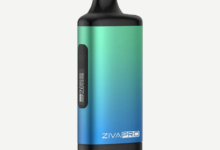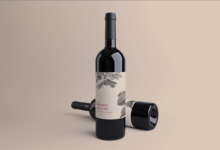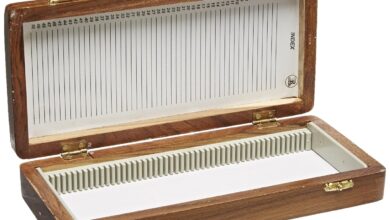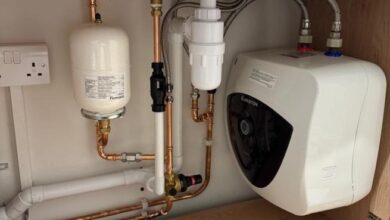
Protection Against Storms: Detailed Guide to Hurricane Windows
Global warming is not doing our planet any good, and it’s leading to an increase in storms and other natural weather disasters. As a result, commercial building owners and some private homeowners are proactively protecting themselves and their buildings from such destructive forces. One way they do this is to install hurricane windows in their buildings.
What are these windows? Do they really protect buildings from storms and such? All these questions will be answered as we provide a detailed guide on hurricane windows.
Table of Contents
Hurricane Windows Explained
These are designed with significantly greater durability than regular glass windows. The reason behind this design is to ensure the windows withstand the powerful winds and airborne debris that hurricanes are known for. You can visit https://www.nationalgeographic.org/ to see a list of the most destructive hurricanes in U.S. history. Manufacturers engineer these windows in such a way that they won’t break upon impact.
Building owners who opt for these options demonstrate their commitment to ensuring building safety. Not surprisingly, you will find these windows most prevalent in coastal regions, which are prone to tropical storms and hurricanes. You can also find them in tornado-prone regions because of their high impact resistance rating. To get the best, you should only buy products from seasoned manufacturers.
These items are perfect for most building projects, whether replacement or new. Not only do they ensure safety, but they also increase aesthetic appeal. So, you can keep residents safe without compromising on visual appeal. As such, there’s no need for windowless structures or boarded-up exteriors.
Materials Used to Manufacture Hurricane Windows
The material elements used to make these items are common among manufacturers. However, every manufacturer has its own process and methods that involve the use of different materials. In most cases, these products are made up of two panes of heat-treated glass fused with a thin plastic membrane. Mostly, this plastic membrane is made up of either ionoplast polymer or polyvinyl butyral (PVB).
The resilience and strength of the window depend on how thick the plastic membrane is. This is important because this is the component that maintains window glazing integrity. If the glass should break for any reason, it is expected that the window will remain largely intact, just like windshield safety glass. While the durability of hurricane-rated glass exceeds that of laminated safety glass, their method of glass retention is the same.
The frames of these products are usually constructed from metal. In most cases, it is aluminum or steel. However, some manufacturers use economical alternatives, like vinyl. The problem with such alternatives is that their durability is reduced.
Hurricane Window Ratings
To ensure these windows can withstand hazardous storm conditions, the manufacturers put them through a design pressure test. Three parts make up this test, which assesses the window’s air and water pressure resistance, as well as structural integrity. The outcome of this test determines the window’s Design Pressure (DP) rating.
The calculation of DP ratings may seem complicated, however, there’s a straightforward method to interpret them. You’ll need to first reference the Saffir-Simpson Hurricane Wind Scale. This scale will help you identify the various hurricane categories:
- Category 1: 74-95 miles per hour winds
- Category 2: 96-110 miles per hour winds
- Category 3: 111-129 miles per hour winds
- Category 4: 130-156 miles per hour winds
- Category 5: 157+ miles per hour winds
Each ten-point increase in the DP rating is about one hurricane level. For example, a 20-DP rating should resist a category 2 hurricane. Consequently, a 40-DP rating should resist a category 4 hurricane.
Fortunately, this information is simplified and presented clearly by most manufacturers. So, you don’t have to bother about the math involved in determining the DP rating. They can even collaborate with your building’s Engineer of Record (EOR) to ensure optimal performance.
Hurricane Window Requirements
As we stated above, manufacturers put the windows they manufacture through a rigorous test to determine their rating. However, that is not the only test these materials undergo to categorize them as hurricane-resistant. The American Society for Testing & Materials (ASTM) is the body that governs the testing of these materials to ensure they meet requirements.
All manufacturers are expected to adhere to and comply with the ASTM guidelines. Therefore, if you are looking to buy Brandon hurricane windows, you need to confirm that the window meets these guidelines. Furthermore, ASTM conducts tests for various impact resistance levels, each with increasingly strict criteria.
These assessments include a large missile impact test. In this test, a nine-pound 2X4 is launched at 50 feet per second (fps), or approximately 35 mph, towards the window’s center. If the window remains intact, the process is repeated, but this time, the target is the corner of the window. Only if the product remains intact after both attempts can it be said to have passed the test.
Furthermore, the window must withstand pressures equivalent to those experienced in winds of up to 200 miles per hour. During this test, it is required to maintain its structural integrity within its frame. Also, there must be no noteworthy punctures in the laminate.
Further Benefits of Hurricane Windows
Apart from their capacity to endure storms, these windows offer a range of additional advantages. Notably, they have exceptional durability and longevity than standard windows. This makes them a great investment irrespective of regional weather patterns. Furthermore, they provide the following:
- Enhanced noise reduction
- Resistance to bullets and bombs
- Protection against intruders
- Heightened safety features
- UV resistance
Conclusion
Hurricane windows are designed to withstand severe storms and hurricanes. They are made from heat-treated glass fused with a thin plastic membrane, enclosed in a frame made of aluminum, steel, or vinyl. These windows are not created equal, as they are grouped into categories from one to four.
These materials undergo rigorous testing to ensure they are resistant to hurricanes and storms. They can be quite expensive as the average price including installation ranges between $75 to $150 per square foot. While this might seem expensive, the overall benefits make this investment a smart one any property owner can make regardless of the weather conditions in their region.








